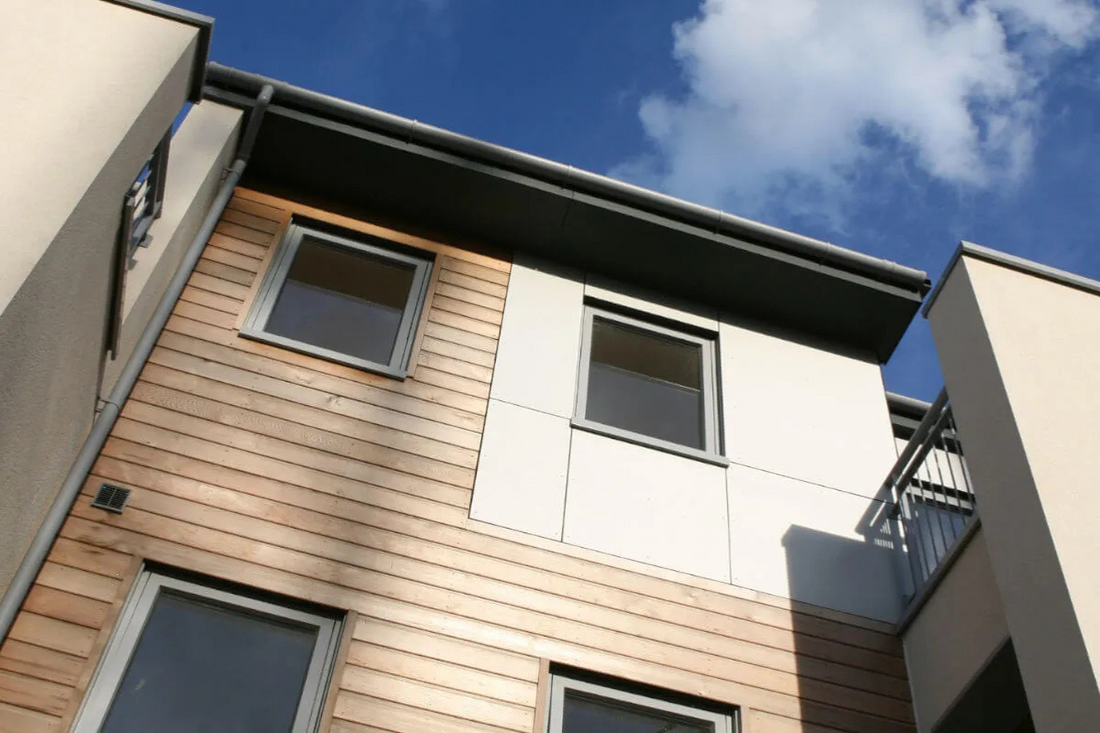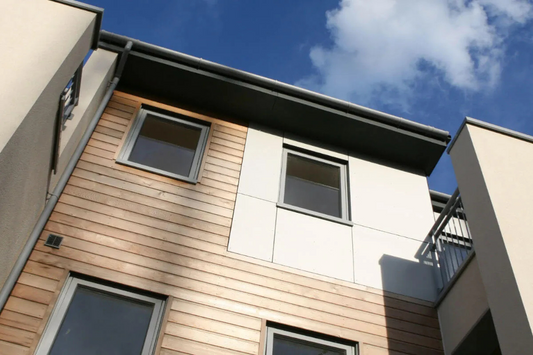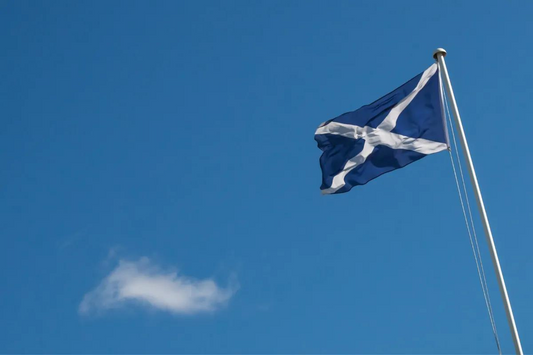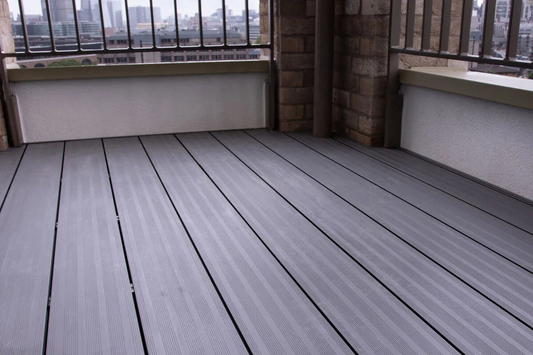
Cladding Fire Regulations
Please note that there is different legislation for buildings of different sizes:
The fire safety classification is, however, the same. The Euroclass system classifies materials depending on how they react to fire:
| Euroclass Rating | Contribution to Fire | Example |
| A1 | Non-combustible | Stone Wool |
| A2 | Limited combustibility | Stone Wool |
| B | Fire retardant EPS |
Painted gypsum board |
| C | Flashover after 10 minutes |
Gypsum board with paper-based wallpaper |
| D | Flashover before 10 minutes | Wood |
| E | Flashover before 2 minutes | Fire retardant EPS |
| F | Performance undetermined | - |
*Flashover = Near-simultaneous ignition of most of the directly exposed combustible material in an enclosed area.
The Commission Delegated Regulation on the classification of the reaction to fire performance of construction products goes into further detail surrounding the classification criteria of each grade.
Fire Resistance of Hyperion Composite Cladding
Our Pioneer line has a Euroclass rating of D s1-d0.
Our Sentinel line has been specially treated with flame retardant additives and is Euroclass B s2-d0.
The previous system used in England before the introduction of Euroclass is no longer valid but many are still familiar with it. If needed, please consult the approximate conversion table below.
| Euroclass | Previous English System |
| A1 | Non-combustible |
| A2 | Limited combustibility |
| B | 0 |
| C | 1 |
| D | 3 |
| E | 4 |
| F | Not classified |
For buildings below 11m height: Compliance with Building Regulations for Fire Resistance in England
There are slightly different regimes in England, Scotland, Wales and Northern Ireland.
The following guide is for English Building Regulations only.
It is the requirement of the client and contractor to ensure the property is compliant with Build Regulations. For Fire Safety the relevant section is Approved Document B of the Building Regulations, the most up to date version of which should always be checked. This link was correct on 5th July 2018.
Approved Document B places restrictions on the combustibility of the cladding used on a building depending upon the building’s height and boundaries.
To aid with your project we have summarised the relevant portions of the document below.
In all instances it is the responsibility of the client and contractor to check the data contained on this page and the interpretation of regulations that EnviroBuild have made. This information is intended as a guideline only. Please contact your planning officer and/or your fire officer before proceeding with your project.
Dwelling houses
Volume 1 of Approved Document B concerns dwelling houses
If the property is within 1m the relevant boundary (detail in sections 9.4-9.6) the cladding need to be Euroclass B or better, i.e. Sentinel cladding should be used.
The relevant boundary is defined in diagram 17.

Notional boundaries exist between buildings on the same site, described in diagram 18.

For Dwelling houses further than 1m, there are three methods to determine whether the Euroclass D Pioneer cladding can be used. Any of the three methods can be used to give compliance. In instances where this conditions are not met then the Euroclass B Sentinel must be used.
Method 1 - This only applies for buildings 3 storeys or less under 24m in length.
Pioneer can be used in the amounts shown in diagram 22.

If there are sprinklers within the building in line with BS9251 the boundary distance may be halved to a minimum distance of 1 m, or the area may be doubled if the distance is maintained.
Method 2 - This only applies for buildings under 10m
The percentage of the relevant wall that can be clad in Euroclass B Pioneer is shown in Table 4.

If there are sprinklers within the building in line with BS9251 the boundary distance may be halved to a minimum distance of 1m, or the area may be doubled if the distance is maintained.
Method 3
The area of Pioneer cladding are in with the areas shown in diagram 20

More detailed methods that are also allowed within the building regulations can be found within: External fire spread: building separation and boundary distances (BR 187 2nd edition)
Non-dwelling houses
Volume 2 of Approved Document B concerns non-dwelling houses
There primary route to compliance is to restrict the combustibility of the two most significant portion of the external wall façade, the cladding and insulation and is described in Section 12.6-12.9. The below diagram is the most relevant one.

Euroclass D Pioneer Cladding can be used on non-dwelling buildings up to 11m not within 1m of another building with the exception of Assembly or Recreational Buildings (as defined within the Approved Document).
Euroclass B Sentinel Cladding is required for all other cases and can be used to an unlimited height.
Insulation must be Euroclass A2 or above for any buildings above 11 m.
Cavity Barriers should be fitted in accordance with section 9 of the Approved Document, in line with 12.6-12.9.
In all instances it is the responsibility of the client and contractor to check the data contained on this page and the interpretation of regulations that EnviroBuild have made. This information is intended as a guideline only. Please contact your planning officer and/or your fire officer before proceeding with your project.


